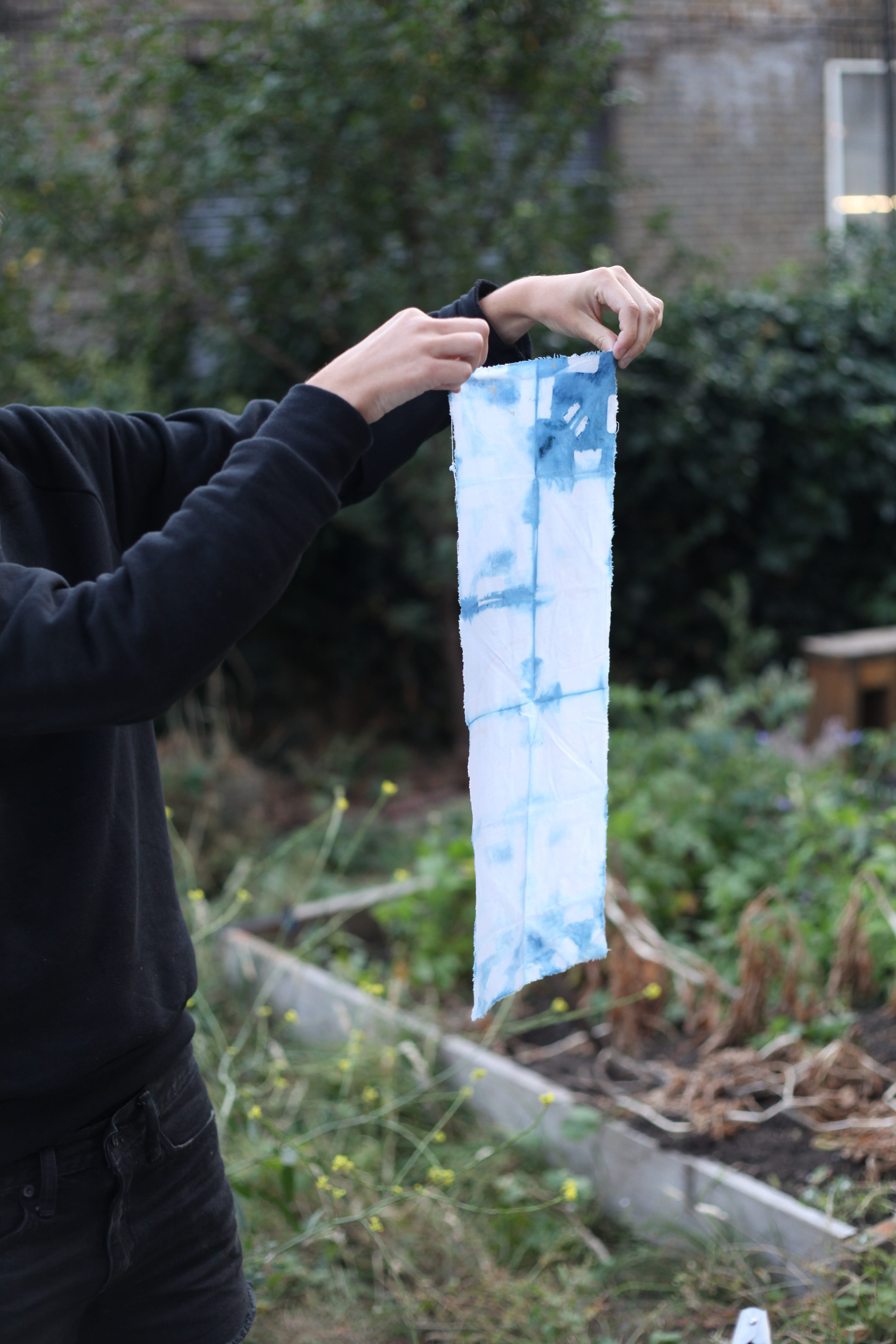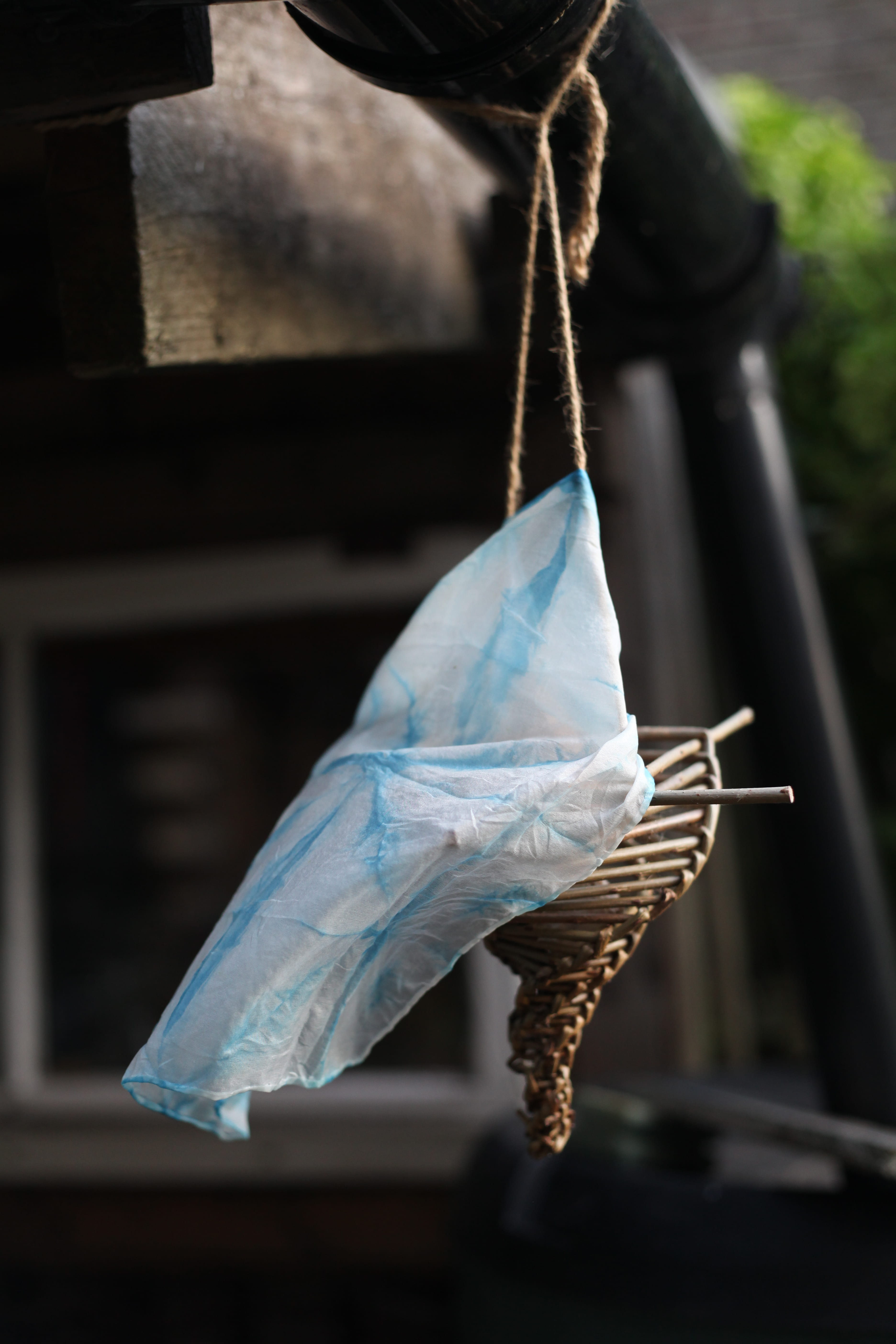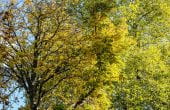Last week LCF’s Mare St garden played host to an indigo/woad dyeing workshop run by Cordwainers Grow – a garden based social enterprise, who run a fantastic range of classes.
The Mare St garden is home to a number of dye plants, from coreopsis which produces bright yellows, to madder, the source of brilliant reds. It’s always inspiring to see the variety of different plants growing there.
But at this workshop, the focus was on blue, and used two different types of plant leaves, Japanese indigo and woad.

As we come to terms with the scale of pollution caused by fashion manufacture, more designers and consumers are beginning to turn to natural dyes as their source of colour.
Natural dyes can be found in so many parts of the natural world from onion skins to oak galls – a great resource on natural dyes is Jenny Dean’s book Wild Colour.
However out of all the natural dyes, the blues obtained from indigo-bearing plants are the most well-known and well-used. More than fifty different species of plants produce indigo, with some of the main sources including several species of Indigofera, Japanese indigo (Persicaria tinctoria) and woad (Isatis tinctoria).

Indigo dye has been used for thousands of years by civilizations all over the world to dye fabric blue and is still extremely popular today as evidenced by the familiar colour of blue jeans.
However, indigo typically grows in the tropics, so in Europe the principal blue dye has traditionally been woad.
Woad is native to the Mediterranean, originating in Turkey and the Middle East, from where it spread into Europe and has been in use as a dye plant since the Neolithic, 5 to 10,000 years ago, even being used by Napoleon to dye his army’s uniforms.

The workshop used leaves from both woad and Japanese indigo grown in the garden to make two dye vats. For those wanting to try this at home – the workshop used this excellent guide from the Journal for Weavers, Spinners and Dyers.
Using natural fabrics such as silk and cotton participants experimented with shibori designs, from the simple shape-resist itajime, to the pole-wrapping arashi technique. You can find more inspiration for shibori here.
Once you have your design, you then dip your fabric into the vat for around 10 mins to allow the dye to fix. When you first pull the fabric out, it looks green, then there is an almost magical transformation as the green turns to blue upon oxidising in the air.
There has been a real growth in the use of indigo as a natural dye in recent years. You only have to look at the work of Victoria Pemberton’s Bind and Fold or British brand STORY mfg. I think it’s great to see more people taking an interest in how their clothes are coloured and exploring ways to make their process more sustainable.
Natural dyes may not solve all of fashion’s problems, but by educating people on colour sources, the use of dye and its creative application, we see our clothes not just as fashion, but part of a greater ecosystem.







